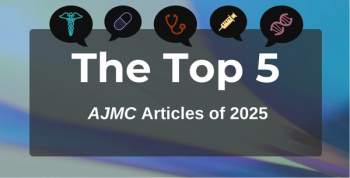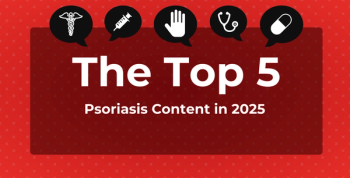
Youth Newly Diagnosed With HIV Have Advanced Infection, Higher Viral Loads
Close to 80% of HIV-positive individuals are shown to be virally suppressed through their most recent test results, according to data from 2016 through 2018, as well as 32% to 63% of adults older than 24 years. Youth with a new HIV diagnosis, however, come in at only 12%.
Close to 80% of HIV-positive individuals are shown to be virally suppressed through their most recent test results, according to data from 2016 through 2018,1 as well as 32% to 63% of adults older than 24 years.2 Youth with a new
In the United States, with close to 25% of new HIV diagnoses showing up in individuals aged 13 to 24 years,3 the level of viral suppression (VS) is an alarming statistic, and it highlights the importance of targeting the HIV care continuum among this demographic to improve their overall health outcomes. Therefore, the investigators conducted the
“Providers for HIV-infected adolescents and young adults face substantial challenges in identifying those who are undiagnosed, linking and engaging them in care, and in helping HIV-infected youth achieve adequate adherence to their antiretroviral medications to realize health benefits. Given recent studies suggesting that prompt HIV treatment is important for health, survival, and the prevention of HIV transmission to others, tracking viral suppression has become increasingly important,” the authors emphasized.
Using SMILE data for October 2012 through September 2014 from 13 ATN sites for youth aged 12 to 24 years, their patient population consisted of 1411 HIV-infected youth. From this group, 75% (n = 1053) were linked to HIV care resources, 59% (n = 830) were engaged with their care, 34% (n = 473) were retained in care at an ATN site, and 34% (n = 474) started antiretroviral treatment (ART). Only a scant 12% reached VS; however, among this group, during the study period, 69% (n = 114) achieved VS at least once and 31% (n = 52) reached VS at 2 or more visits.3
Positive correlates of VS included the following measurements3:
- Lower viral load at baseline (HR, 1.56; 95% CI, 1.32-1.89; P = .0001)
- Recent ART (HR, 3.10; 95% CI, 1.86-5.18; P = .0001)
- Less time between HIV test and referral to a care coordinator (7 days to 6 weeks: HR, 2.52; 95% CI, 1.50-4.23; P = .0005; 6 weeks to 3 months: HR, 2.08; 95% CI, 1.08-4.04; P .0294)
The most notable negative correlate was recent substance use (HR, 0.68; 95% CI, 0.48-0.95; P = .024).3
“Cross-sectional analyses of data previously obtained in the ATN also suggested that prompt referral to linkage services after diagnosis was associated with better and more successful engagement and that adolescent-friendly services are important for youth to successfully link to care,” the authors noted.
They posited that the low rates of ART and VS could be due to psychosocial and socioeconomic comorbidities connected to the locations of the SMILE clinics the patients attended. To overcome these challenges, the authors suggested several solutions3:
- Faster link to care after diagnosis
- Adolescent-friendly services
- More intensive case management
- More frequent contact with clinic staff (eg, text messages and social media)
- Address unmet behavioral health needs early
“Whether current simpler, more potent regimens may favorably influence ART initiation, adherence, and viral suppression rates in youth are a focus of ongoing ATN research,” they concluded. “Innovative solutions to eliminate barriers at each of the individual, provider, clinic, community and structural (eg, health system) levels are urgently needed to most effectively address the HIV epidemic among youth in the [United States] and most appropriately address the youth mission of the US [
References
1. Evidence of HIV treatment and viral suppression in preventing the sexual transmission of HIV. CDC website. cdc.gov/hiv/pdf/risk/art/cdc-hiv-art-viral-suppression.pdf. Published December 2018. Accessed February 17, 2020.
2. Youth with HIV less likely than adults to achieve viral suppression [news release]. Bethesda, MD: National Institutes of Health; February 10, 2020. nih.gov/news-events/news-releases/youth-hiv-less-likely-adults-achieve-viral-suppression. Accessed February 17, 2020.
3. Kapogiannis BG, Koenig LJ, Xu J, et al. The HIV continuum of care for adolescents and young adults attending 13 urban US HIV care centers of the NICHD-ATN-CDC-HRSA SMILE Collaborative [published online February 13, 2020]. J Acquir Immune Defic Syndr. doi: 10.1097/QAI.0000000000002308
Newsletter
Stay ahead of policy, cost, and value—subscribe to AJMC for expert insights at the intersection of clinical care and health economics.








































